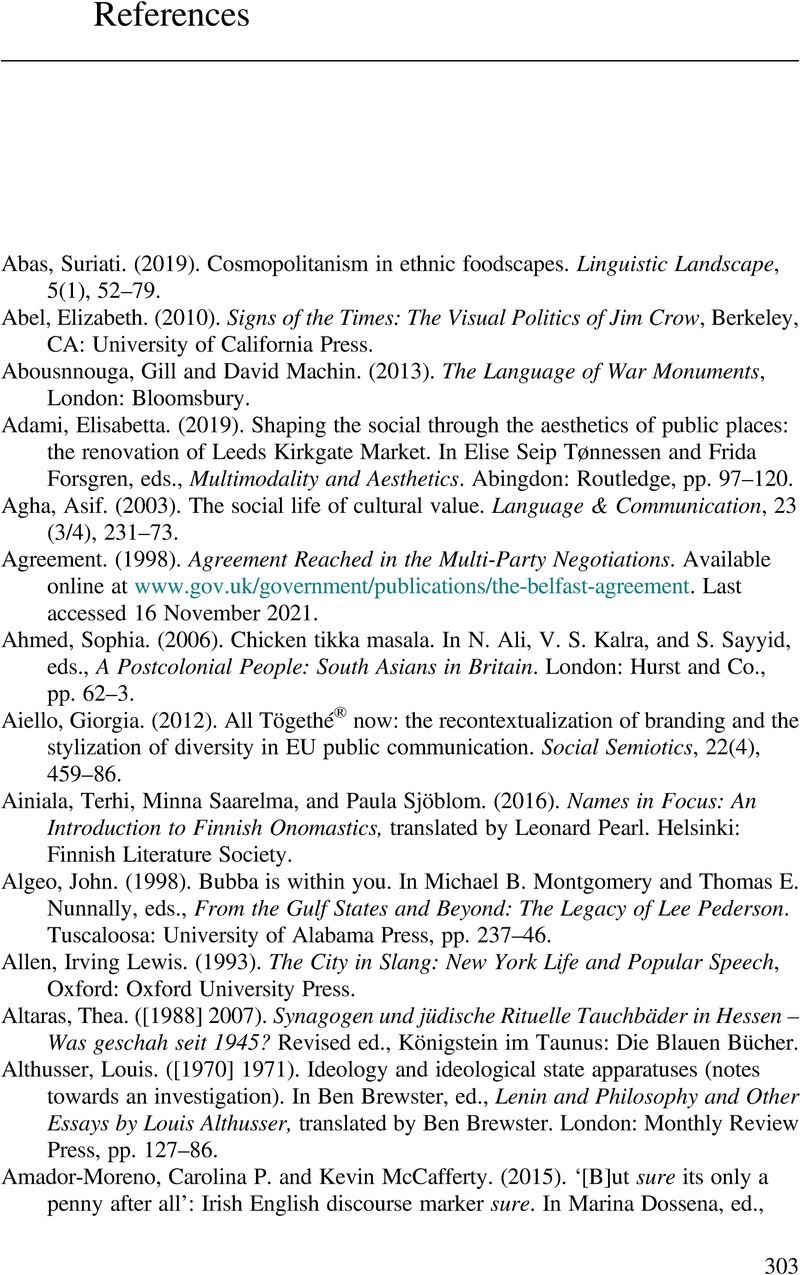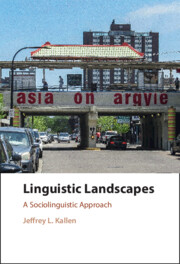Book contents
- Linguistic Landscapes
- Linguistic Landscapes
- Copyright page
- Contents
- Figures
- Places in Figures
- Diagrams
- Tables
- Preface
- Acknowledgements
- 1 Approaching the Linguistic Landscape
- 2 Why Linguistic Landscape?
- 3 Doing Things with Codes
- 4 Space and Landscape
- 5 People
- 6 The Linguistic Landscape as Discourse
- 7 Time, Space, and the LL
- 8 Researching Linguistic Landscapes
- References
- Index
- References
References
Published online by Cambridge University Press: 08 June 2023
- Linguistic Landscapes
- Linguistic Landscapes
- Copyright page
- Contents
- Figures
- Places in Figures
- Diagrams
- Tables
- Preface
- Acknowledgements
- 1 Approaching the Linguistic Landscape
- 2 Why Linguistic Landscape?
- 3 Doing Things with Codes
- 4 Space and Landscape
- 5 People
- 6 The Linguistic Landscape as Discourse
- 7 Time, Space, and the LL
- 8 Researching Linguistic Landscapes
- References
- Index
- References
Summary

- Type
- Chapter
- Information
- Linguistic LandscapesA Sociolinguistic Approach, pp. 303 - 340Publisher: Cambridge University PressPrint publication year: 2023



